If you’re planning on stepping outside in Louisiana this summer, you might want to take a look at the nine ticks in Louisiana. Ticks are hematophagous (bloodsucking), parasitic arthropods that prey on animals and humans alike. While not all species of ticks carry Lyme disease, many of them carry other illnesses, diseases, and pathogens. It’s important to understand what ticks live in Louisiana so that you can avoid them.
Here, we’ll go over the nine types of ticks in Louisiana. We’ll discuss each species’ appearance, preferred hosts, and pathogen transmission capabilities. By the end, you’ll be an expert on ticks in Louisiana, how to avoid them, and what to do if you get bitten.
1. Woodchuck Tick
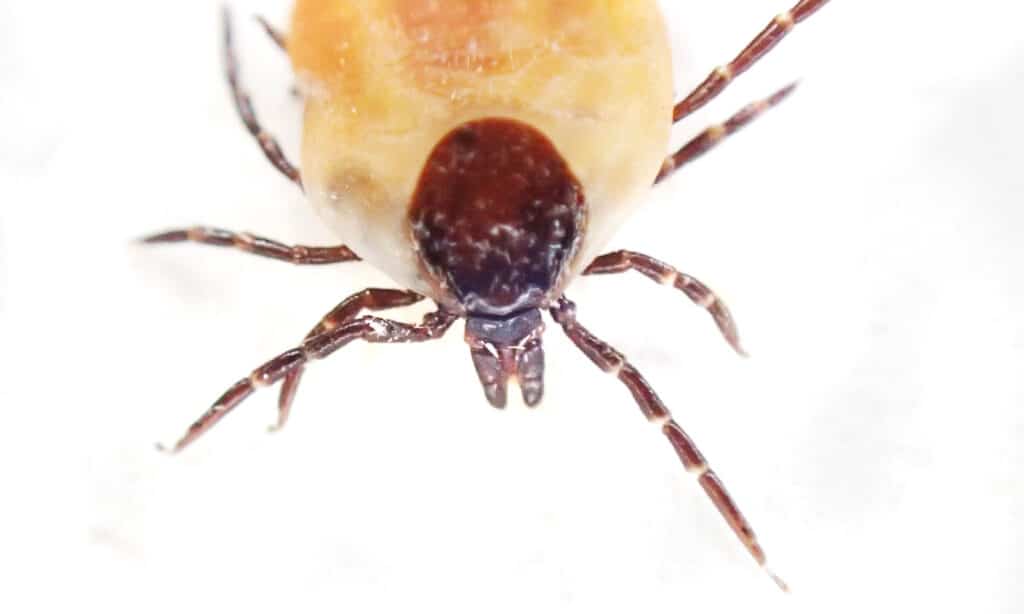
Woodchuck ticks live all over the eastern United States as far north as Canada and as far south as Florida.
©iStock.com/jonnysek
Also known as the groundhog tick, it’s no surprise that this tick’s favorite host is the woodchuck. Groundhog ticks in Louisiana aren’t picky though, they’ll also feed off of foxes, raccoons, dogs, cats, and even skunks. They’re not likely to bite humans as they spend most of their time hanging out in animal burrows. Woodchuck ticks are common throughout the eastern United States.
2. American Dog Tick
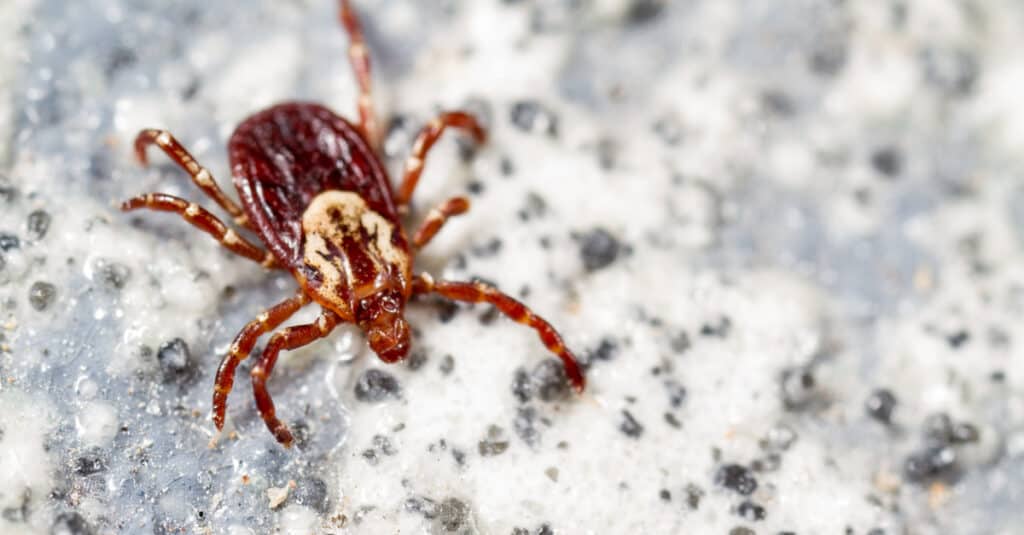
One of the largest ticks in Louisiana is the American dog tick.
©Elliotte Rusty Harold/Shutterstock.com
American dog ticks are one of the largest ticks in Louisiana. Females are red-brown with tan scuta (the hard shields over their shoulders) while males have all over tan and red-brown mottling. American dog ticks inhabit the eastern half of the United States, where they tend to stick to grasslands or shrublands. Some of their favorite hosts include deer, raccoons, dogs, cats, and occasionally, humans. American dog ticks are also vectors of both Tularemia and Rocky Mountain spotted fever.
3. Rabbit Tick
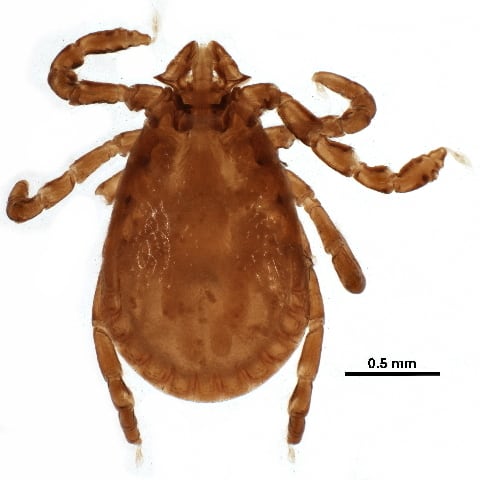
The rabbit tick gets its name from its favorite food source.
©CBG Photography Group, Centre for Biodiversity Genomics / Creative Commons – License
Rabbit ticks are some of the least likely ticks in Louisiana to bite humans. They prefer to suck the blood of rabbits, raccoons, rats, mice, and other small mammals instead. These ticks are vectors of Rocky Mountain spotted fever. Rabbit ticks are red-brown, with sesame seed-sized bodies. They’re most active in the spring and summer months.
4. Lone Star Tick
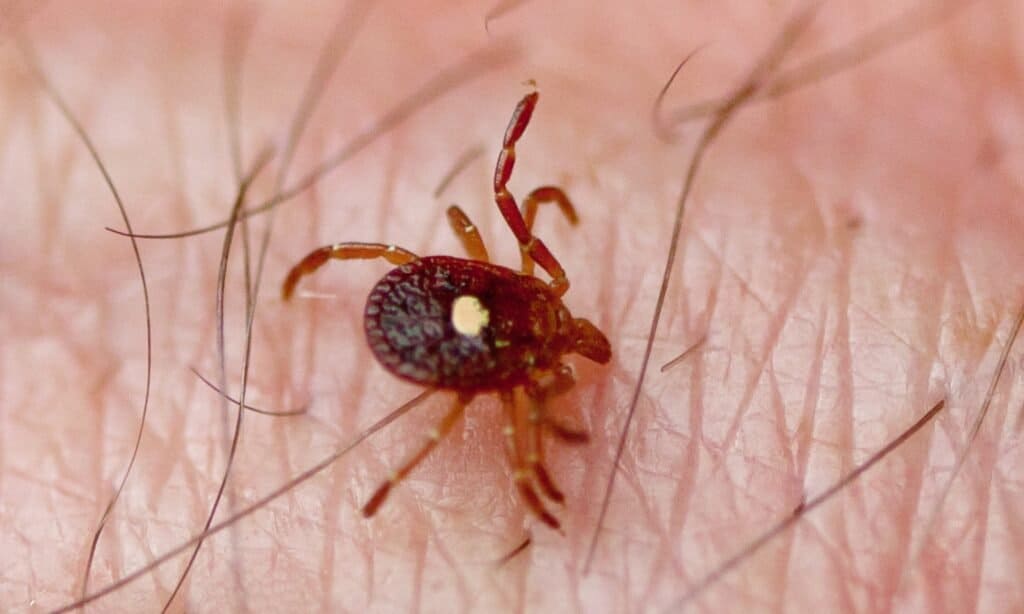
One of the most common ticks in North America, lone star ticks feed on just about anything they can find.
©iStock.com/epantha
Named for the tan pinprick marking on the female’s back, the lone star tick is one of the most common ticks in Louisiana. Lone star ticks feed primarily on white-tailed deer as adults. Young lone star ticks feed on smaller animals, like raccoons, mice, dogs, foxes, and skunks. These ticks are known as aggressive feeders, and will even follow scent trails in search of hosts.
Lone star ticks are also known as cricket ticks, turkey ticks, or northeastern water ticks. Males lack the ‘lone star’ marking, which can make them more difficult to identify.
5. Gulf Coast Tick

The Gulf Coast tick is found only in the southeastern part of the United States and the Gulf Coast.
©iStock.com/cturtletrax
Gulf Coast ticks have dark brown bodies with tan mottling and red-brown legs. Their mouthparts are large and visible from above. These ticks in Louisiana inhabit the entire southeastern portion of the United States. They often bite humans and may transmit Rocky Mountain spotted fever, tick paralysis, or Rickettsia. Gulf Coast ticks also commonly feed on cattle.
6. Winter Tick
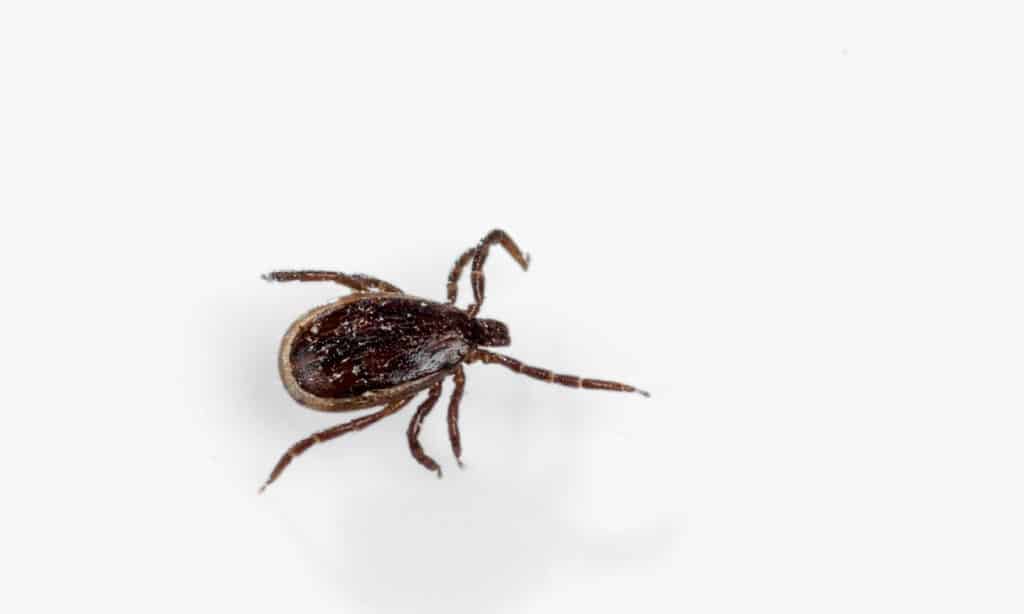
Despite their frigid-sounding name, winter ticks live in all southern states
©iStock.com/VladK213
Winter ticks get their name from their most active season—winter. They’re also called moose ticks, due to their preference for large ungulates like moose, deer, and elk. Unlike the other ticks on our list, which take three hosts in their lifetime, these ticks feed on only a single host. Out of all the ticks in Louisiana, the winter tick is one of the least likely to bite a human. They’re generally harmless to hosts. But, if too many attach to one animal, they can bleed it to death.
7. Deer Tick
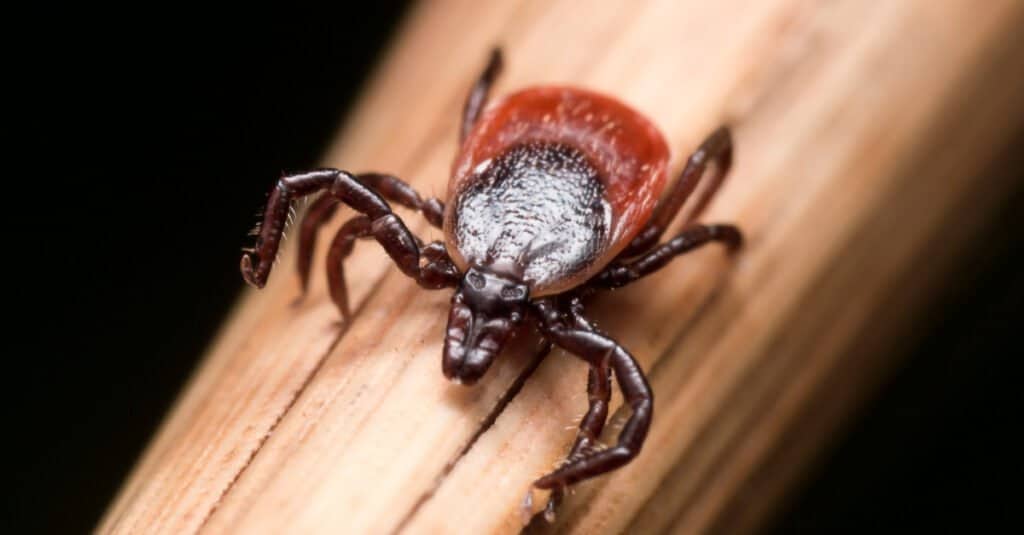
The deer tick is one of the most common, and one of the deadliest ticks in North America.
©Steven Ellingson/Shutterstock.com
Out of all the ticks in Louisiana, the deer tick is the only effective vector for Lyme disease. Lyme disease is a bacterial infection that can affect any of the body’s systems. Symptoms can be debilitating for sufferers, especially if the disease becomes chronic.
Deer ticks are also known as black-legged ticks. Their black legs make them readily distinguishable from other types of ticks. Females have orange bodies, while males are dark brown.
8. Cayenne Tick
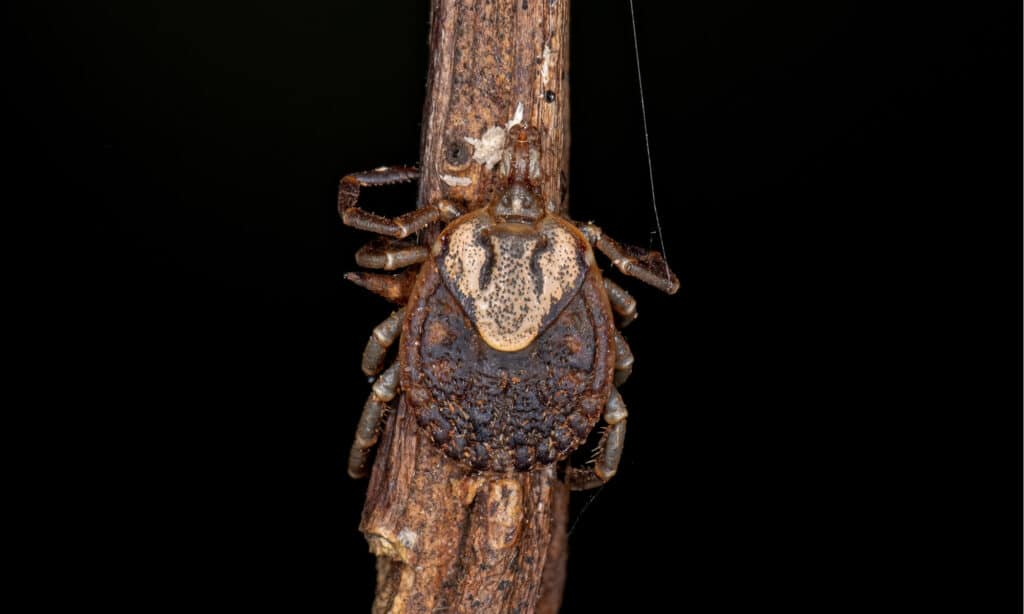
A uniquely southern tick, the cayenne tick even inhabits the islands of the Caribbean.
©Vinicius R. Souza/Shutterstock.com
Cayenne ticks are one of the smallest, roundest ticks in Louisiana. They rarely feed on humans, preferring horses and other livestock instead. They live only in the extreme southern parts of the United States and can be found as far south as Central America.
Male and female cayenne ticks look very similar. The biggest difference between the two is in their coloring. While males have tan and dark brown mottling over their entire body, females only have tan coloring on their shoulders. Cayenne ticks are vectors for Rocky Mountain spotted fever, though they rarely pass it to humans.
9. Brown Dog Tick
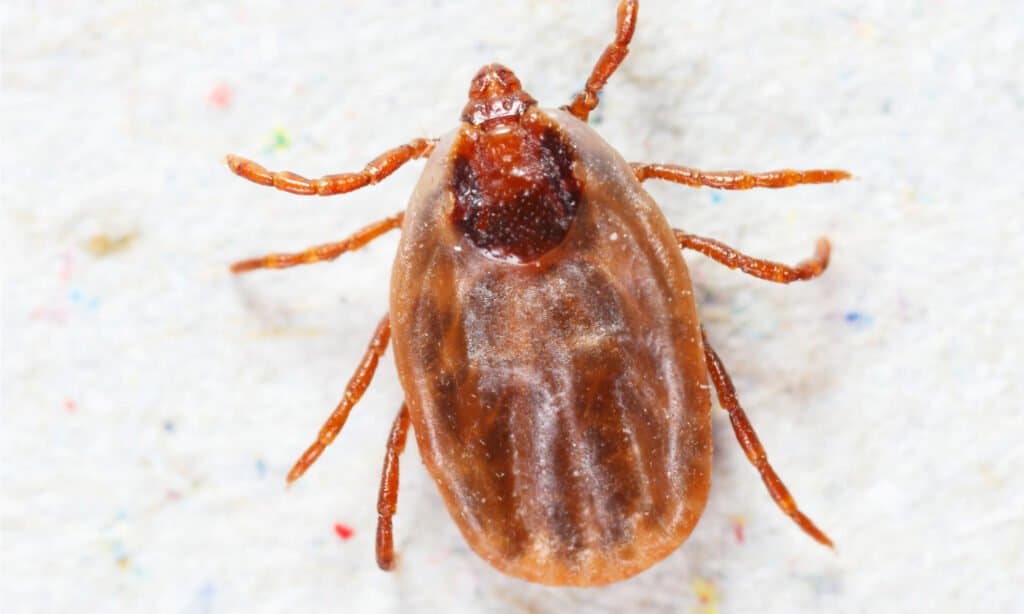
Unlike every other tick on our list, the brown dog tick lives almost exclusively indoors, near dogs.
©7th Son Studio/Shutterstock.com
Brown dog ticks are tiny when unfed, but can expand to the size of a grape after gorging on blood. They have long, narrow, red-brown bodies, and feed almost exclusively on dogs. Thanks to their indoor nature, these ticks in Louisiana remain active all year. They’re one of the few ticks in the world to live indoors. The only thing needed to attract brown dog ticks is, you guessed it, dogs.
The photo featured at the top of this post is © iStock.com/nechaev-kon
Thank you for reading! Have some feedback for us? Contact the AZ Animals editorial team.






